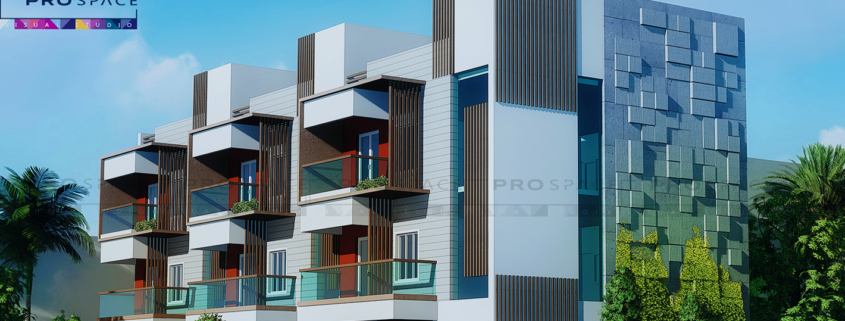
3D rendering Designers is an innovative procedure that is like photography or cinematography because you are lighting and organizing scenes and creating pictures. Dissimilar to consistent photography. However, the scenes being captured are imaginary, and everything is showing up in a 3D rendering should be created on the PC before it can be rendered. This is a considerable measure of work, yet allows for an almost infinite amount of creative control over what shows up in the scene, and how it is depicted.
The three-dimensional information that is depicted could be a total scene including geometric models of various three-dimensional objects, buildings, landscapes, and animated characters – artists need to make this picture by Animating and Modeling before the Rendering can be done. The 3D rendering designers process illustrates this three-dimensional scene as a photo, taken from a specified area and perspective. The rendering could include the recreation of realistic lighting, shadows, atmosphere, color, texture, and optical impacts, for example, the refraction of light or motion blur seen on moving items – or the rendering might not be reasonable for the imagination, and could be designed to appear as a work of painting or unique picture.
3D rendering designers Rendering types:
Rendering is classified into two types, their central difference being the speed at which pictures are computed and finished.
Real-Time Rendering: Real-Time Rendering is utilized most prominently in gaming and intuitive graphics, where pictures must be computed from 3D data at a fantastically rapid pace.
• Interactivity: Because it is difficult to anticipate precisely how a player will interface with the game environment, pictures must be rendered “progressively” as the activity unfolds.
• Speed Matters: all together for movement to seem liquid, at least 18 – 20 frames for every second should be rendered to the screen. Anything not as much as this and activity will seem rough.
• The strategies: Real-time rendering is radically enhanced by committed graphics hardware (GPUs), and by pre-ordering however much data as could be expected. A great deal of game situation’s lighting data is pre-registered and “prepared” specifically into nature’s surface documents to enhance rendering speed.
Offline or Pre-Rendering: Offline rendering is utilized as a part of circumstances where speed is less of an issue, with calculations commonly performed utilizing multi-center CPUs as opposed to committed graphic hardware.
• Predictability: Offline rendering is seen most regularly in animation and impacts work where visual complexity and photorealism are held to a considerably higher standard. Since there is no eccentrics concerning what will show up in each frame, large studios have been known to commit up to 90 hours render time to individual frames.
• Photorealism: Because offline rendering happens inside an open-finished time frame, larger amounts of photorealism can be accomplished than with real-time rendering. Characters, environments, and their related textures and lights are normally permitted higher polygon tallies, and (or higher) resolution surface files.
This was only a brief overview by Our Studio of rendering a picture. It’s a specialized subject, yet can be very interesting when you truly begin to investigate a portion of the basic techniques.

Post a Comment